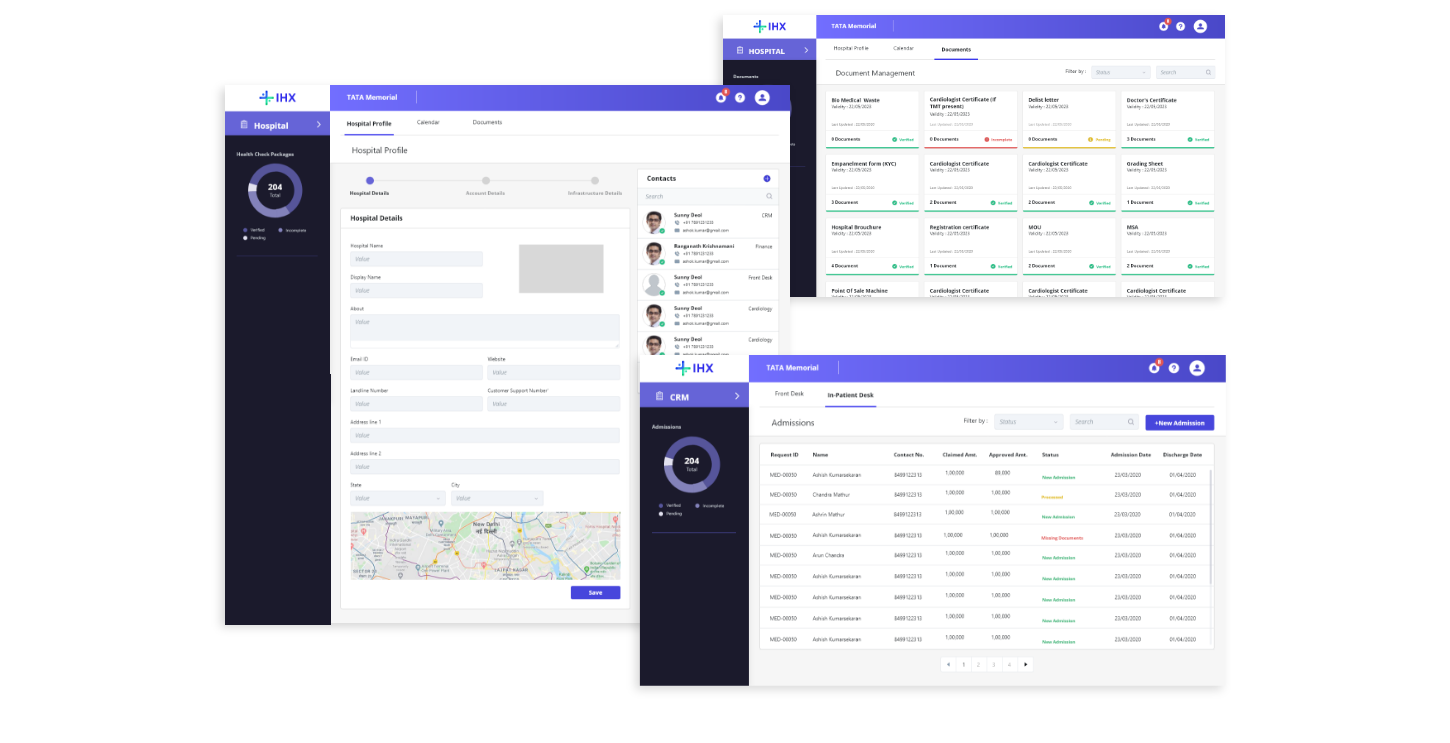Technology is now dominating industries globally. In the healthcare sector, new technological advancements are enabling not just more efficient processes but creating entirely new, superior ones. Hospitals are seeking more novel approaches to enhance their healthcare methods while offering healthcare adroitness. This demands access to the best devices and effective administration and tracking of patient workflow. This, in turn, ensures a pleasant patient experience and improves overall productivity. And with a pandemic successful in bringing the entire world to its knees, we know we need more innovative, better healthcare facilities.
Keeping this in mind, Medi Assist, the biggest healthcare administration provider in India, brought to life – IHX, the Intelligent Healthcare Exchange.
This intelligent healthcare exchange grants transparency in the health care management system through outpatient and inpatient administration and insurance tracking, revenue cycle, profile management, ultimately optimizing costs. The platform supports hospitals to order their workflows associated with patient care and insurance billing.
IHX is a best-in-class platform that empowers hospitals, enabling their payer and patient workflows to be agile, more reliable, and more affordable. The technology platform accounts for over 30% of India’s in-patient cashless transactions and facilitates real-time decision-making of these claims.
IHX’s cutting-edge healthcare technology employs Artificial Intelligence and Machine Learning systems. This enables offline hospitals and legacy systems to partake in automatic workflows with minimum or no variation in their IT foundation. Insurance for both the hospitals and the patient is streamlined.
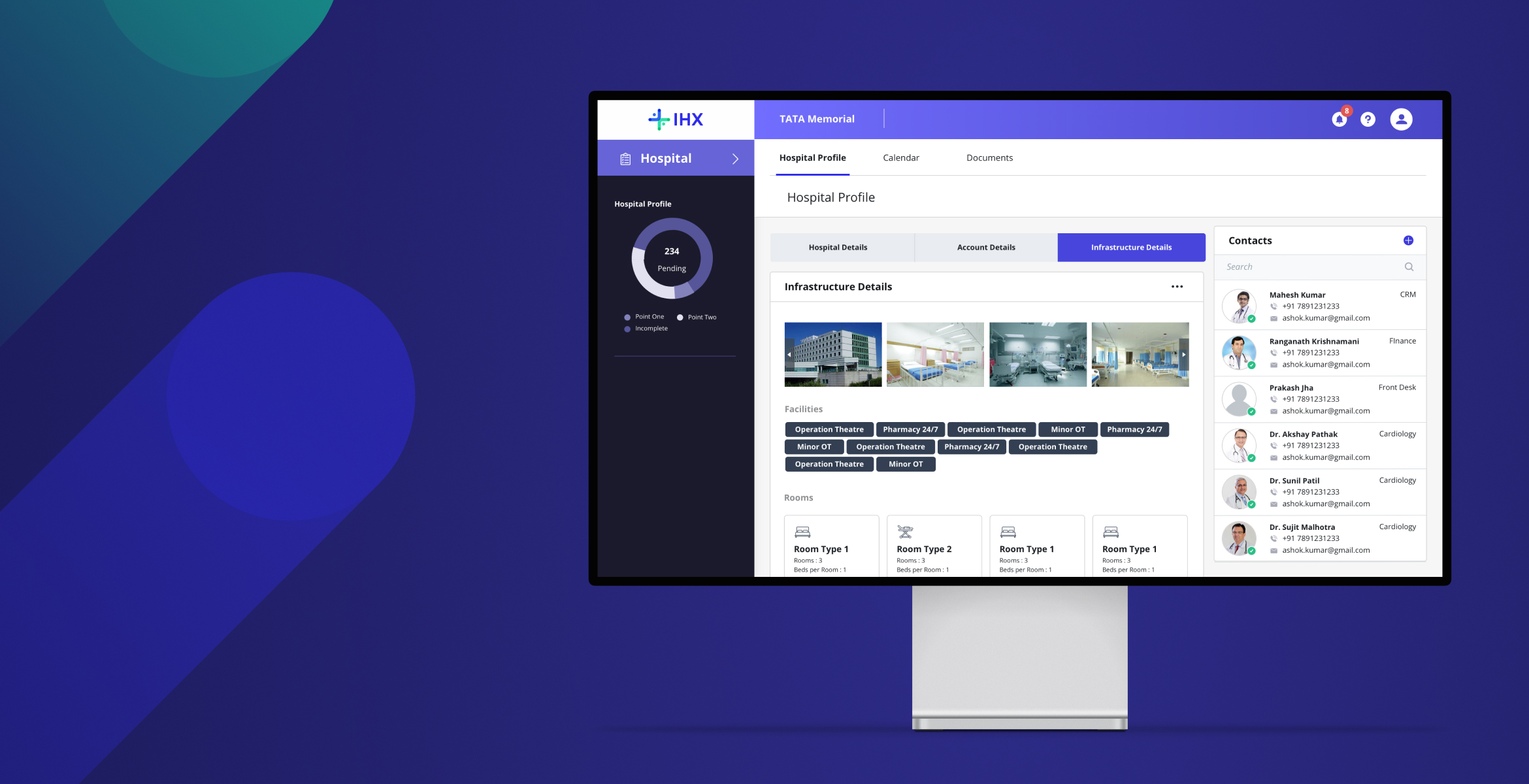
IHX’s revolutionary e-solution equips hospitals with instruments that reform processes across a spectrum of healthcare facilities.
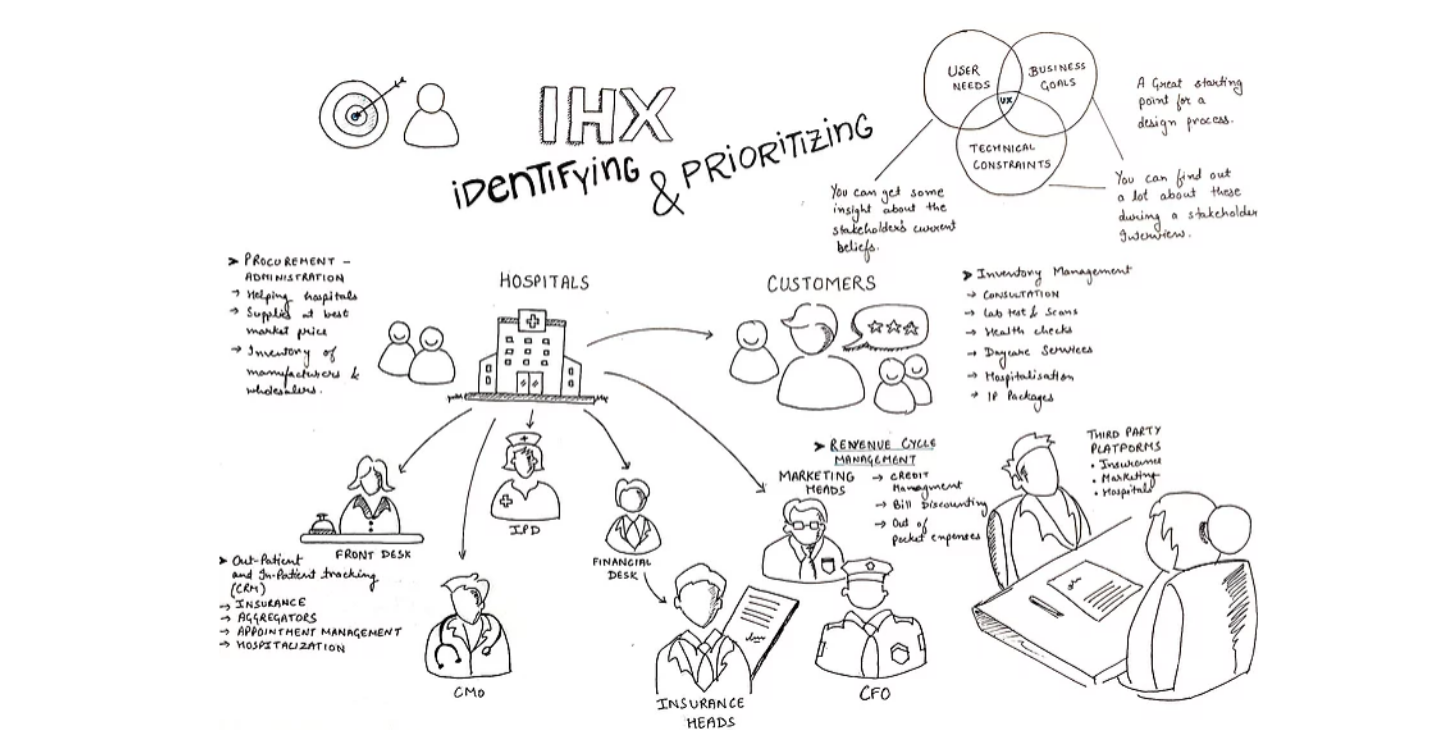
“When clients come to us with a brief,” says Shreya Sarda, “we keep it at the table, view it from different angles, and come up with certain new elements which when added to the layer of the product offering as a design solution will up the game a notch.”
We completed a myriad of jobs that include:
We conducted brainstorming sessions and formed a checklist of words. Moreover, we created relationships between the stakeholders to furnish a robust system.
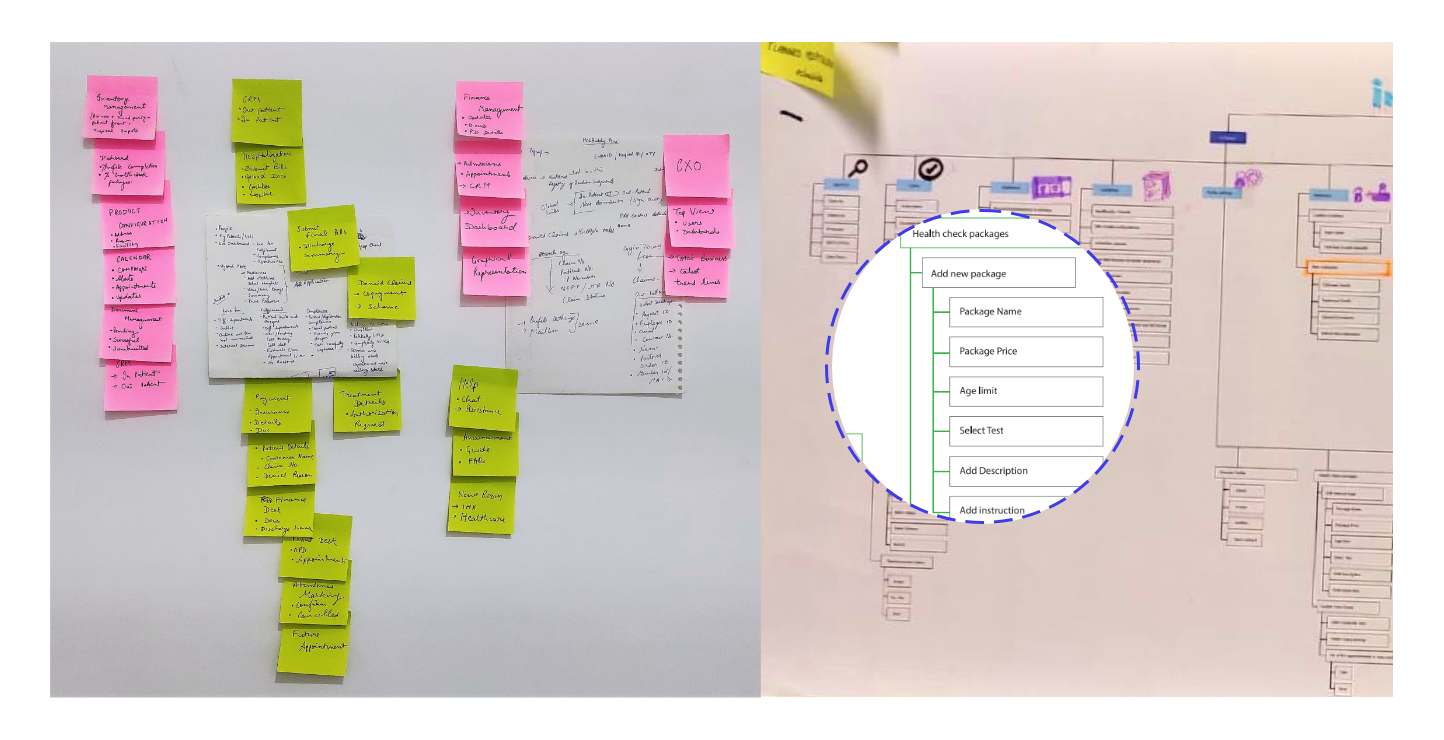
We dug in every characteristic distinctly so as to manifest it in the Product experience. This matched the team’s perspective and helped everyone realize the proposed strategy and what we were required to do next.
At the onset, a thorough stakeholder analysis helped us assort them according to their participation, engagement, and influence in the project. This eventually led to the identification of better user flows and hierarchy mapping.
“Unmet needs = goals + pain points”
We used consumer segmentation to identify and compile groups of potential (or existing) customers, focusing on what motivates their response.
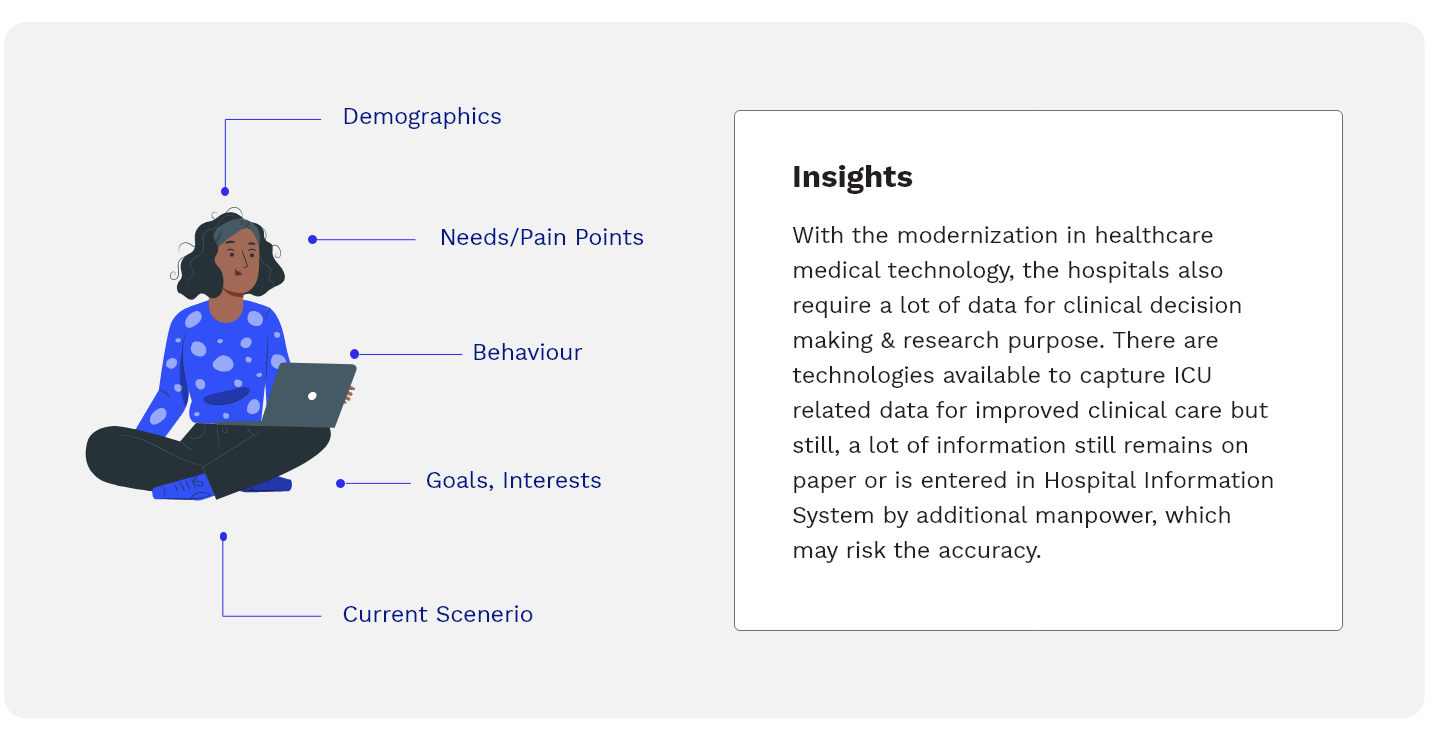
For recognizing the multifaceted business purposes, and different user behaviors, we utilized an Affinity Diagramming approach. This assisted us with better organization of the data points heading to different rational designs and intuitive communications.
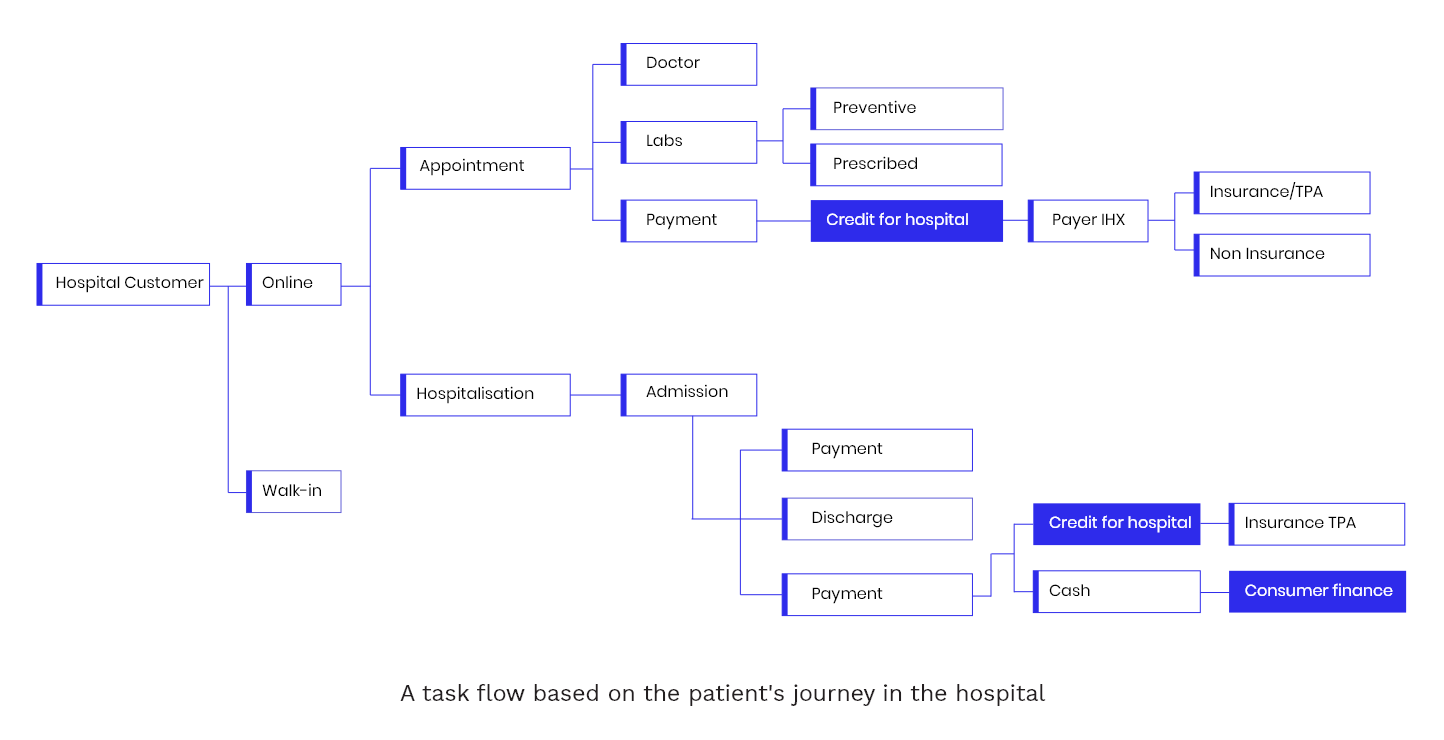
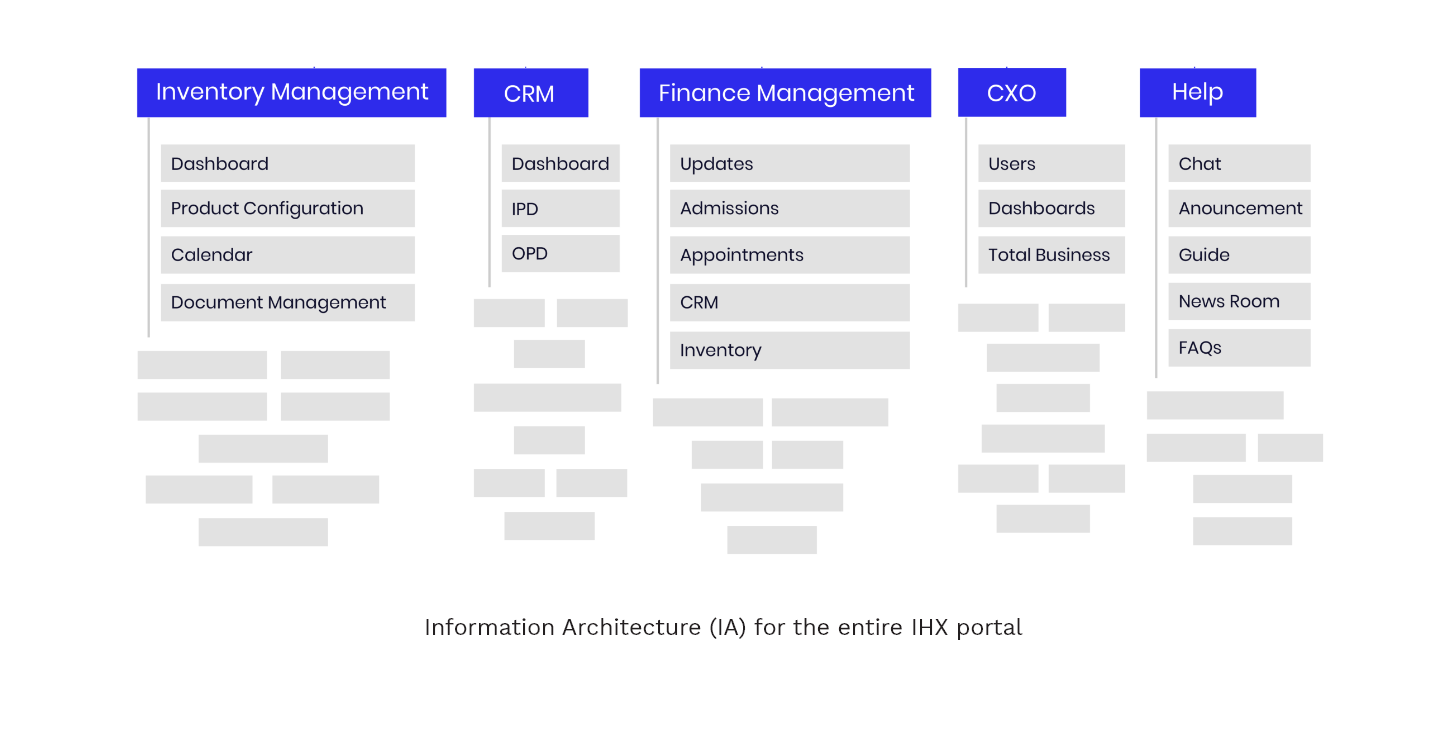
Blending digital approaches into traditional healthcare models will create a three-in-one antidote to once tackle the systemic problem-trio of accessibility, affordability, and quality. By integrating smarter workflows to ease the operational efficiency for in-patient and out-patient departments with a transparent mechanism and real-time tracking of all the payers.
We built low/high-fidelity design layouts that exhibited an outline of the structure and layout of the product. We specifically focused on space allocation and prioritization of content, functionalities ready, and intended behaviors.
IHX had its visual language developed to display its concept of a seamless and safe platform for hospitals’ insurance management needs. The key to the production of a prominent brand is uniformity in its visual expression and delivery. A firm brand guideline supported us in securing visual uniformity throughout the project and its communication.


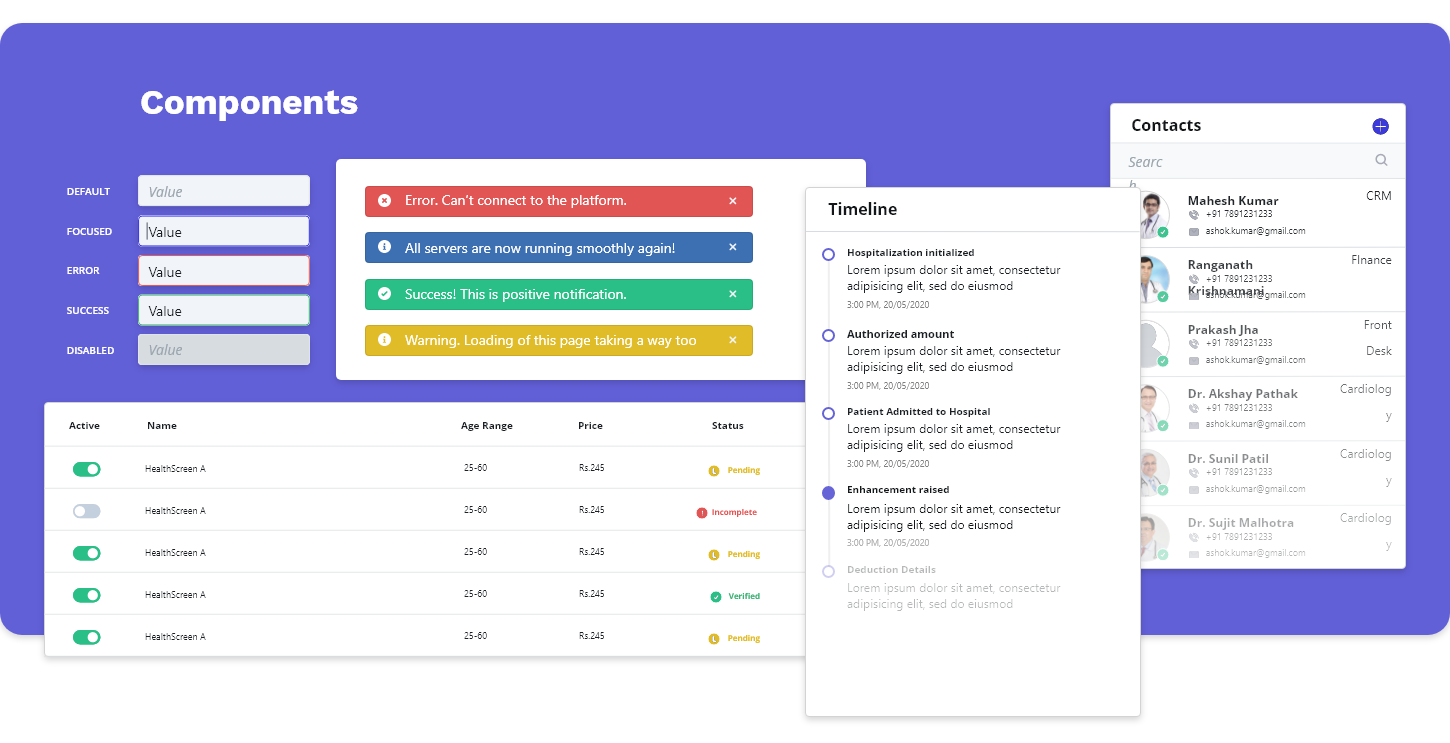
We built this visual design considering that a strong visual system builds user trust and interest in the product and appropriately represents the brand. When paired with a strong interaction design, the visual design will increase task success rates and user engagement.
The entire design language plays around boosting the overall work experience for the end-user, supported with solid theories on visual perception. We generated user interfaces and graphics that were easy and effective.
Intuitive design starts with understanding your users. You need to determine what really works for them and how they place their priorities. Taking cues from this, we then proceed to the next layer of helping them navigate seamlessly through a ton of information by simply putting it all in a hierarchy. Hierarchy of colors, shapes, text, etc.
